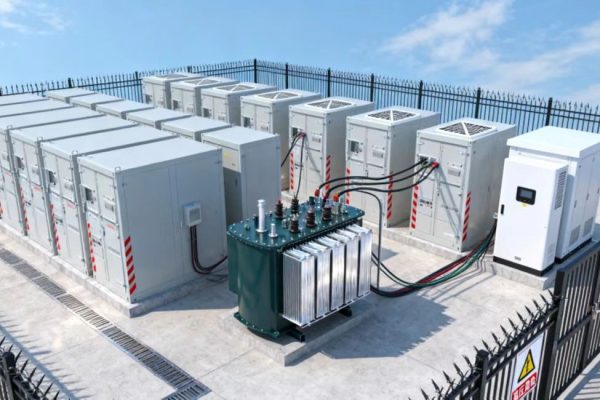As industries around the world continue to focus on sustainability and cost savings, one of the most effective strategies for improving operational efficiency and reducing energy costs is load shifting. This approach involves moving energy consumption from high-demand periods to times when energy is cheaper or more abundant. Integrating energy storage systems (ESS) into industrial load shifting is a powerful solution that allows businesses to better manage their energy usage while taking advantage of lower electricity rates, enhancing grid stability, and reducing overall energy expenditures.
In this article, we explore how integrating energy storage into industrial load shifting strategies can provide measurable benefits for manufacturers, system integrators, and energy managers. We will provide replicable solutions, real-world case studies, and key technical insights to guide the successful implementation of this strategy.
1. Understanding Industrial Load Shifting
Load shifting is the practice of shifting electricity consumption from peak demand times to off-peak periods. This helps businesses avoid high electricity prices during peak hours and reduce their energy-related costs. Load shifting is often combined with energy storage systems to store electricity during times of low demand and discharge it when demand is higher.
In industrial settings, load shifting is typically implemented by:
- Shifting non-essential loads: Moving energy-intensive processes or machinery that can operate during off-peak hours to times when energy demand is lower.
- Using energy storage to support peak loads: Storing energy during off-peak periods (e.g., at night) and discharging it during peak periods to cover high energy demand.
Key components of load shifting systems include:
- Energy Storage Systems (ESS): Batteries, flywheels, or other storage technologies.
- Energy Management Systems (EMS): Software that controls and optimizes the timing of energy use, integrating the energy storage with the grid or on-site generation.
- Automated Controls: These manage and schedule load shifting without disrupting production or essential processes.
By incorporating energy storage into the load-shifting strategy, industries can reduce their reliance on the grid during expensive peak periods while maintaining their operational needs.
2. Benefits of Integrating Energy Storage in Industrial Load Shifting
Integrating energy storage into industrial load shifting offers several key benefits:
a) Cost Savings
One of the primary drivers for adopting load shifting strategies is the potential for substantial cost savings. Energy prices often follow a time-of-use (TOU) pricing structure, meaning that electricity is more expensive during peak periods and cheaper during off-peak periods. By using energy storage to shift consumption to off-peak hours, industrial operations can:
- Minimize demand charges: These charges are based on the peak power consumption within a billing cycle, and energy storage can help level out consumption peaks, reducing costs.
- Reduce energy bills: With energy storage, businesses can store cheap electricity during off-peak hours and use it during high-cost periods, significantly lowering their total energy expenses.
b) Grid Stability and Reliability
When industrial sites incorporate energy storage into their load shifting strategy, they contribute to overall grid stability. By reducing peak demand during periods of high grid load, they help balance supply and demand on the grid. Additionally, energy storage systems can support grid frequency regulation and act as backup power, improving energy reliability.
c) Reduced Environmental Impact
Load shifting combined with energy storage can also have environmental benefits. By using renewable energy sources, such as solar or wind, to charge the storage system during low-demand periods, industries can reduce their carbon footprint. This leads to a more sustainable energy mix and supports corporate sustainability goals.
d) Operational Flexibility
Integrating energy storage with load shifting provides industrial facilities with more flexibility in their energy management. Storage systems can be programmed to release energy during critical times, ensuring that production is not impacted by grid outages or supply issues. Additionally, energy storage enables the facility to adapt to fluctuating energy demands more efficiently.
3. Key Technical Considerations for Energy Storage in Load Shifting
While the integration of energy storage into industrial load shifting offers clear benefits, it is essential to understand the technical considerations for effective implementation:
a) Storage System Sizing
The success of a load shifting strategy depends on selecting an appropriate energy storage system size. Too little storage will not provide sufficient capacity to cover peak loads, while too much storage may lead to inefficient use of resources. Key factors to consider include:
- Peak load demand: Calculate the maximum energy demand during peak hours.
- Storage duration: Determine how long the energy storage needs to discharge during peak demand periods.
- Energy source availability: Ensure that the storage system can be charged effectively using available renewable sources or from the grid during off-peak periods.
b) Energy Management System (EMS)
A robust EMS is essential to ensure that the energy storage system is used optimally. The EMS integrates with the overall energy infrastructure of the facility, collecting real-time data on energy consumption, demand, and supply. Key features of an EMS for load shifting include:
- Demand forecasting: Predicting energy usage to ensure that storage is available when needed.
- Automatic control: Automatically shifting loads and discharging storage when demand spikes.
- Real-time monitoring and reporting: Allowing energy managers to monitor system performance and adjust as needed.
c) System Efficiency and Cycle Life
Energy storage systems should be selected for their efficiency and long-term reliability. Batteries, for example, should have high round-trip efficiency (e.g., over 90%) to minimize energy losses during storage and discharge cycles. Additionally, the cycle life of storage devices (e.g., lithium-ion batteries) should be considered to ensure that the system remains cost-effective over time.
d) Grid Connectivity and Regulations
For industrial sites with grid connectivity, it is essential to ensure that energy storage systems comply with grid codes and regulations. Integration with the grid requires sophisticated control systems to manage power flows between the grid, the storage system, and the facility’s demand. Additionally, systems must be able to operate seamlessly in island mode during grid outages, providing backup power to critical loads.
4. Case Study: Load Shifting in a Manufacturing Facility
Background
A large automotive manufacturing facility in the Midwest United States was facing significant electricity costs, particularly due to high demand charges during peak periods. The facility operated 24/7, with energy-intensive machinery running continuously, contributing to high peak loads.
The Solution
The company decided to integrate an energy storage system into its load-shifting strategy. The system included:
- 1 MW of lithium-ion battery storage to store energy during off-peak hours.
- A smart EMS to manage energy flows, forecast demand, and optimize load shifting without impacting production schedules.
- The energy storage system was charged during night-time off-peak periods when energy prices were lowest and discharged during daytime peak hours to meet the facility’s high energy demands.
Results
- Cost Savings: The facility achieved a 25% reduction in electricity costs by shifting 40% of its energy consumption to off-peak periods.
- Peak Demand Reduction: The energy storage system successfully reduced peak demand charges by 35%.
- Improved Reliability: The system provided backup power during grid interruptions, ensuring continuous operation of critical processes.
- ROI: The project had a payback period of 4 years, with significant savings realized within the first two years.
Integrating energy storage into industrial load shifting strategies offers a highly effective solution for reducing energy costs, improving grid stability, and enhancing operational reliability. By selecting the right storage technology, optimizing the Energy Management System (EMS), and carefully sizing the system, industries can significantly reduce their energy expenditures and contribute to sustainability goals.
For EPCs, system integrators, and energy managers, understanding how to integrate energy storage into load shifting is essential for providing cost-effective, sustainable energy solutions to industrial clients.









